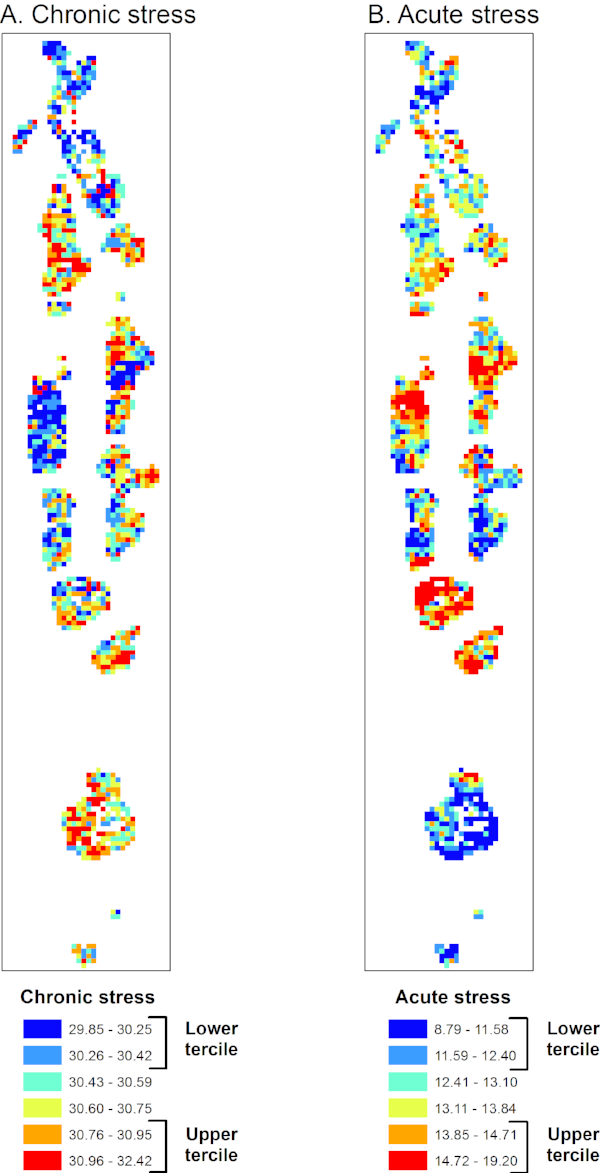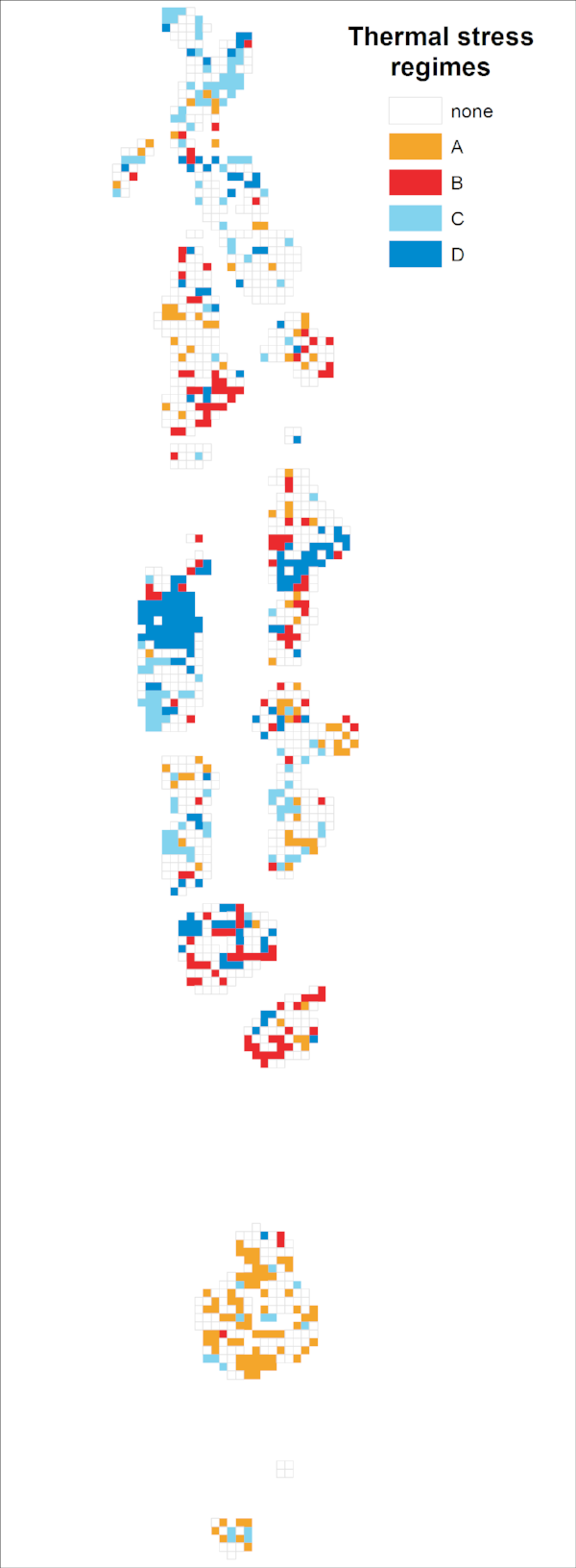Maldives Bleaching Risk Assessment Tool
The bleaching risk assessment tool (BRAT) was funded through a grant from the Ministry of Environment and Energy, Republic of Maldives. This effort is one component of a wider World Bank administered project aiming to assist the Maldives adapt to climate change. The goal of this component is to produce remote sensing monitoring and decision tools for climate change risk assessment. Specifically, we aim to address coral reef vulnerability to thermal stress across the Maldives. This goal can be further refined into two broad objectives:
Assist with national evaluations of the impacts of future bleaching events
Identify areas that have the highest (and lowest) risk of chronic bleaching so that marine spatial planning goals in the Maldives can be better achieved.
A key aspect of BRAT is the identification of thermal stress regimes for the Maldives (please read Mumby et al. 2011) for justification of this approach and detailed methods). This analysis distinguishes and classifies sites (pixels) according to their history of chronic versus acute thermal stress using NOAA’s Coral Reef Temperature Anomaly Database Version 4 (CoRTAD). Chronic stress represents the routine, ambient maximum seasonal temperature to which corals are acclimated (Ulstrup et al. 2006) and varies markedly at scales of hundreds of kilometers. Acute stress occurs during bleaching events and develops over weeks to months. Acute stress may vary dramatically at local scales of kilometers because it is influenced by local hydrodynamics.
A 29 year (1982 – 2010) weekly climatlogy from CoRTAD was used to map chronic stress across reef habitats in the Maldives. Chronic stress was measured as the maximum of weekly mean (MWM) temperatures for all years in the archive for which no acute stress occurred (i.e. for each pixel, the MWM is the single hotest week in the archive for which no bleaching occurred) (Fig 1A). Acute stress was measured as the maximum number of degree heating weeks (DHW, oC week) experienced during the 1998 bleaching event, the most severe event in the Maldives during the time series. The DHW is calculated from accumulating HotSpots of >1 oC that occur during a 12-week window, where a HotSpot is defined as the temperature above the MWM (Selig et al. 2010) (Fig. 1B). Chronic and acute stress measures were divided independently into terciles (thirds) and pixels at the extremes of each stress measure (i.e. upper and lower tercile (Fig. 1)) were used to generate four contrasting thermal stress regimes (Fig. 2 & 3). Those sites falling in the middle tercile were left uncategorized.
It is reasonable to expect corals within the different thermal regimes will respond differently to the projected increased frequency of bleaching events. There is considerable evidence corals acclimated to warmer conditions fare better than corals acclimated to cooler conditions when experiencing a high stress event (acute). Also, for a given level of acclimation (chronic stress), coral mortality will increase under higher acute stress (Mumby et al. 2011). In other words, if two separate coral communities experience similar levels of chronic stress but different acute stress, the community with the higher acute stress will fare worse. Corals in regime A (high chronic and low acute stress) are predicted to be the most resistant coral communities to current bleaching. They are acclimated to warmer temperatures, but experience relatively lower levels of acute stress. Corals in regime B (high chronic and high acute stress) may have some natural resistance to bleaching conditions by virtue of their acclimation to high chronic temperature, but their exposure to acute warming during bleaching events is likely to cause significant mortality. Corals in regime C (low chronic and low acute stress) are predicted to benefit from a lack of severe bleaching events but their acclimation to cooler conditions is likely to increase their vulnerability to even weak periods of rapid warming. Finally, corals in regime D (low chronic and high acute stress) are predicted to experience relatively severe mortality because they are acclimated to cooler chronic temperatures, but are exposed to high acute stress likely resulting in severe bleaching.
How corals within each of the four stress regimes (A,B,C,D) will respond to future acute stress events (bleaching) remains hypothetical (Mumby et al. 2011). One of the goals of this project is to establish a formal link between response and regime. Sites will be indentified within each of the four regimes, and corals will be monitored before, during and after future bleaching events to enable testing and refinement of some of the proposed hypotheses. Any measured links between coral response and thermal regime will allow for better assessments of the impacts of bleaching across the Maldives and will be valuable for spatial management goals such as reserve design. Coral reef monitoring will be conducted by both the Maldives Government and 5 participating resorts. With time, it is expected more resorts will join the effort allowing for continous monitoring of reefs across the different thermal stress regimes. Data from individual resorts will be centralized, perhaps through an online database, allowing for broadscale analysis that will hopefully reveal patterns of national relevance.
More details about the methods and their justification can be found here.
Figure 1. Chronic and acute stress are mapped for pixels with reef habitat. The lower and upper third values are used to build thermal stress regimes (see Figure 2).
Figure 2. Thermal stress regimes are defined by dividing both chronic (SST) and acute (DHW) stress into terciles. Pixels at the extremes of each stress measure (upper and lower tercile) were used to generate four contrasting thermal stress regimes, labeled: A (low acute, high chronic); B (high acute, high chronic); C (low acute, low chronic); and D (high acute, low chronic).
Figure 3. Thermal stress regimes for the Maldives. Click here for an online version.





